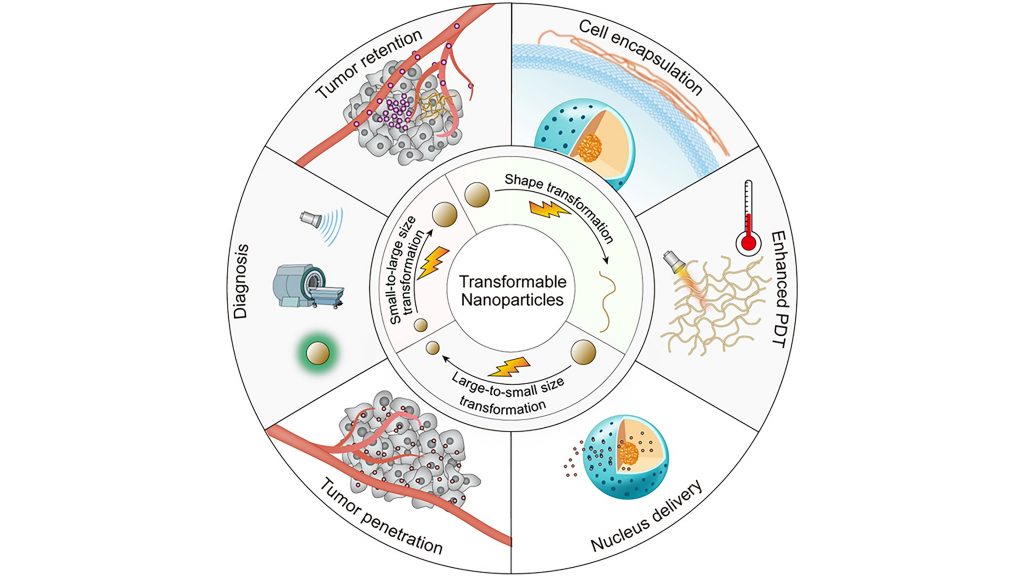From the Journal: Applied Physics Reviews
WASHINGTON, December 7, 2021 — For more than three decades, biomedical nanomaterials have been successfully developed for the benefit of theranostics — a compound term referring to the diagnoses and treatment of tumors. The nanoparticles must reach the tumor site and its distinct microenvironment to target the treatment for the tumor.

Recent studies show the physical properties of nanoparticles, especially their size and shape, dramatically influence their biological behaviors. Control over these material properties is necessary to ensure the treatment is released at the tumor, after the particles have circulated through various other healthy physiological microenvironments.
In Applied Physics Reviews, by AIP Publishing, researchers from China and the United States examine how biology triggers morphological changes in certain types of nanoparticles. These types of particles are called smart transformable nanoparticles, because they can alter their size and shape upon stimulation from their surrounding environment.
These smart transformable nanoparticles are particularly promising for tumor theranostics because their physical properties will adapt to the physiology. These adaptations improve particle circulation, biodistribution, tumor penetration, tumor retention, and subcellular distribution for targeted therapy.
“Smart transformable nanoparticles can alter their morphologies under different physiological conditions as the therapeutic demands,” said co-author Jianxun Ding. “In our study, we reveal the structural designs for these smart systems as well as the in-depth mechanisms of the transformations.”
The researchers present the designs of transformable nanoparticles as a guideline for their construction and discuss the biomedical applications in the realm of theranostics. Ding and his colleagues showcase their insight through novel classifications for nanoparticle transformation design and the mechanisms contributing to the change.
For instance, the researchers divide the design transformation into two broad categories: size and shape. For size-transformable nanoparticles, the alterations are further divided into small-to-large and large-to-small transformations. The study discloses detailed and rational designs of transformable nanoparticles based on their structures.
As for the mechanisms contributing to nanoparticle transformation, “we believed the structure and stimuli both made a great contribution,” said Ding. “For example, different pH values decided the accurate site for the transformation, which correlate to varying physiological, extracellular, and endo/lysosomal conditions.”
Nanoparticles with constant physical morphologies have been widely investigated and applied in tumor theranostics in the past, while more recent studies of nanoparticle transformation phenomena have focused primarily on the response to stimuli. Until now, however, there has not been an in-depth discussion on the designs and applications of morphology-transformable nanoparticles.
“Our review covers the structure design, mechanism for transformation, and biomedical application of smart transformable nanoparticles, and includes perspectives on their limitations as well,” said Ding. “We believe this review will shed light on this important field.”
###
For more information:
Larry Frum
media@aip.org
301-209-3090
Article Title
Smart transformable nanoparticles for enhanced tumor theranostics
Authors
Jinjin Chen, Zhongyu Jiang, Yu Shrike Zhang, Jianxun Ding, Xuesi Chen
Author Affiliations
Chinese Academy of Sciences, Sun Yat-sen University, University of Science and Technology of China, Harvard Medical School
